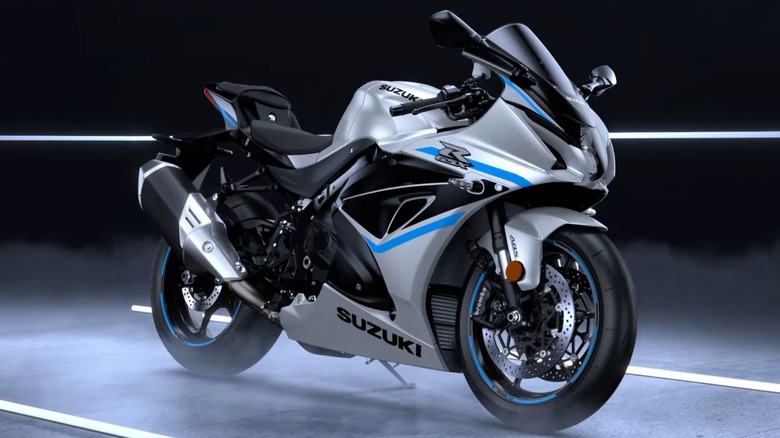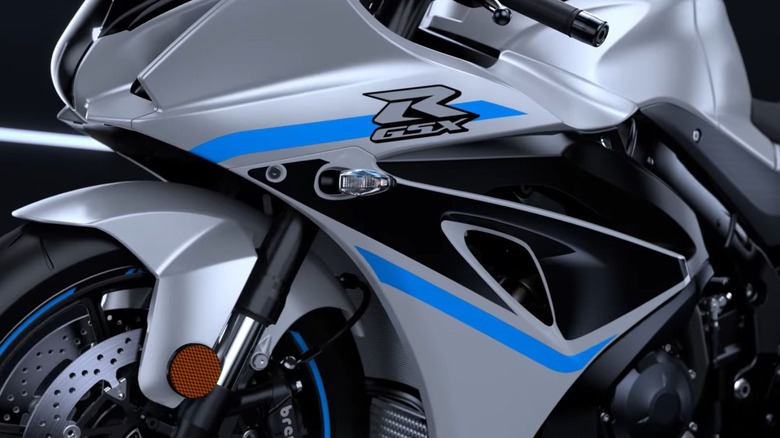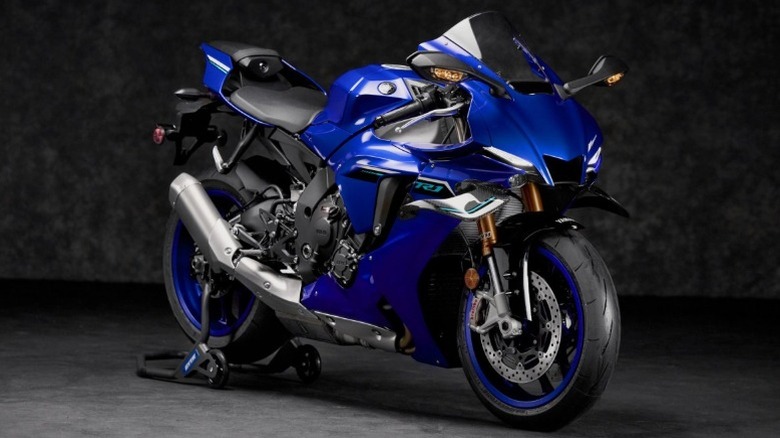How Fast Is The Suzuki GSX-R1000 & How Much HP Does It Have?
When one thinks of the best motorcycle brands today, it's difficult not to bring up Japanese automaker Suzuki. The company has released many exciting bikes over the years, including the TL1000R and the Katana, which are two of the most powerful bikes in the manufacturer's catalog, as well as the SV650 and the GSX-R750, which we counted as two of the best Suzuki bikes ever made.
As expected, the company has amassed an impressive following over the decades, owing to the quality of its products and the sheer impact it has had in the motorcycle industry. As such, many have an eye out for all of its new products, like the latest variant of the Suzuki GSX-R1000, which is powered by the same 200 hp, 999cc, inline-4 engine that has featured in the model since its refresh in 2017.
Suzuki debuted the first GSX-R1000 bike in 2001, presenting an ultra-high-performance one-liter motorcycle built from the chassis of a GSX-R750. Over the past 20 years, the GSX-R1000 has undergone numerous improvements, each enabling it to push the limits of a supersport bike's performance. Although Suzuki hasn't disclosed the bike's top speed, bikers have reported that the engine propels the GSX-R1000 to speeds around 186 miles per hour with the company's speed limiter engaged. Let's go over the rest of the GSX-R1000's specs to see how it fits into the broader supersport bike category.
There's more to the GSX-R1000 than raw power
It's no secret that the GSX-R1000 has long been a popular choice in the 1,000cc sportsbike segment. Since its launch, this bike has captured the hearts of many motorcycle enthusiasts with its aggressive styling and incredible power, making it a top choice for both domestic riders and racers on the track. The 2025 model appears to continue this momentum with several features, including one of Suzuki's famed GSX-R motors, which the company has paired with its Suzuki Racing Variable Valve Timing (SR-VVT) system. This system enhances performance and fuel efficiency by adjusting the intake valve's opening and closing timing depending on the bike's engine conditions.
The GSX-R1000 motor has a bore and stroke of 2.992 inches by 2.169 inches, and a high compression ratio of 13.2:1. The bike is equipped with a six-speed constant mesh transmission, paired with Suzuki's Clutch Assist System (SCAS) multi-plate wet clutch. This combo offers several advantages, including smoother engine braking. Interestingly, the bike can perform clutchless upshifts and downshifts, thanks to the company's Bi-directional Quick Shift System, which was initially offered only in the GSX-R1000R. Now, let's turn to some rivals in its class to see how the Suzuki stacks up.
Enter the Kawasaki Ninja ZX-10R and Yamaha YZF-R1
Suzuki doesn't have the 1,000cc market all to itself. The GSX-R 1000 goes up against heavy hitters like the Kawasaki Ninja ZX-10R and Yamaha YZF-R1. These two bikes are top of the line when it comes to performance, style, and build quality, with the YZF-R1 being widely regarded as a bike that pushed sports bikes to a new level. The current YZF-R1 comes with a 998cc, liquid-cooled, inline-4 engine capable of producing 200 hp. On the other hand, the Kawasaki Ninja ZX-10R features a 998cc, inline-4, 16-valve motor rated at 196 hp. With its 200 horsepower, the GSX-R1000 plays in the same performance ballpark as these two bikes, making it a solid choice if you were to pick among the three.
When it comes to pricing, the Suzuki GSX-R1000 has an MSRP of $16,499, which includes a $530 destination charge. The Kawasaki Ninja ZX-10R is priced at $17,799 for the non-ABS variant or $18,799 for the ABS variant, with an $815 destination charge. Lastly, the Yamaha YZF-R1 is available for $18,999, along with a $625 destination charge.


